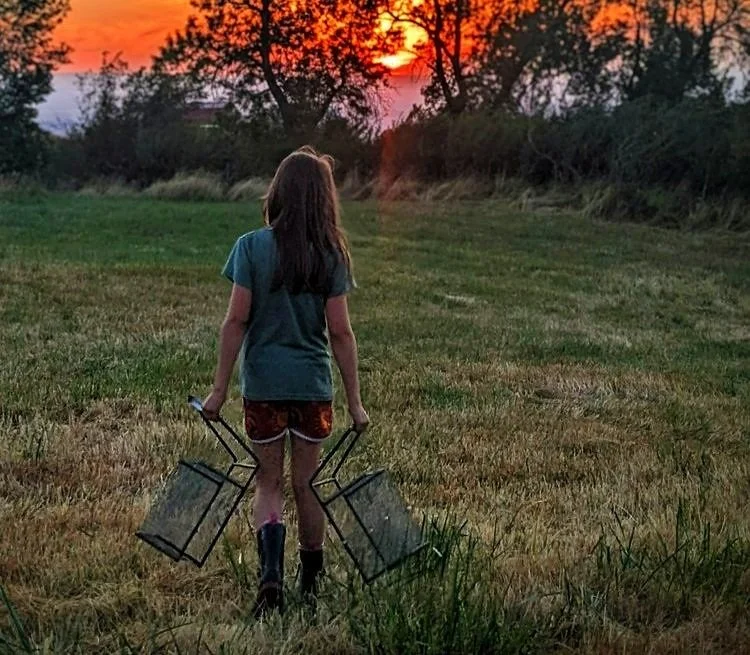Off-Season Maintenance
A few visits a month will maintain peak performance!
You would think that playing a game since they were in primary school (to us old guys, that’s “grade school”), professional athletes would have everything figured out. They’re good-to-go, right?
Not so! For, even professional - seasoned - ball players return, year after year, to training camps prior to the up-coming season.
That being the case, let’s take a look at the average outdoor activity. For me, the most awkward is cranking up the hand-eye coordination on the first fly-fishing trip of the season. As I have advanced in years, much like my cerebral memory, muscle-memory isn’t what it once was. I am also finding that a few rounds of clay shooting during the off-months has gone from “just for fun” to a “necessity” – to avoid dirty looks from my setters on Opening Day.
Clay-bird practice will ensure you’re ready when the time comes.
And yet, many of us tend to think that Fido has it all together. I mean, after months on the couch, or in the dog run, we open their portable kennel like, “Release the Kraken!” and ol’ Fido is supposed to post-card point every bird and successfully make every blind retrieve! The reality being far short of that ideal.
There has been much written about the need for physical exercise during the off-season – and that goes for both, dog and human. Rightfully so. These regular forays into the field can also reduce injuries from worn paw pads to torn ligaments. However, the work-outs to keep us in shape, improve stamina, and prevent injury aren’t all that is required.
Okay, we will accept that there is a need to stay in shape, but the dog has instinct going for it, so the dog’s “good” when it comes to bird finding, point holding, and retrieving, right? - Wrong!
Dogs will retain a load of information, to be sure. I have seen dogs hunt a familiar ground in the exact way they had in previous years. With very few reps, dogs will even seek specific types of brush or terrain that has held birds in other areas. All true, but there are patches of “rust” when it comes to practices such as knowing how close to approach a bird in various conditions, what to do if they scuttle off, playing the wind, etc. Even some bad habits learned in the backyard often go un-noticed until they rear their ugly heads on the first hunt of the season.
Physical and mental exercise during the off-season will pay-off big!
Some that are often considered as harmless fun might include creeping on tweedy birds or rushing at squirrels. Fun? You bet! Harmless, perhaps not so much. Dogs, especially young dogs, get bored and will often turn to these forms of entertainment if their time isn’t occupied by efforts of greater benefit. Once realized in the yard, they are often replayed in the field as well. Bad habits aren’t always learned in the off-season. In fact, dogs jumping the bird to flush is often caused by the hunter shooting birds when the dog breaks point. Therefore, reinforcing the bad habit.
I can’t tell you how often I’ve heard, “He’s (dog) never purposefully jumped birds before!” Or, “I don’t know when (Fido) began creeping (not holding) his point?!” I bet I do.
Spring through late-summer, before the seasons of fall begin, are the months laid-off. Preserves are closed and, if you haven’t tried your hand at spring upland dog trials, you and your dog have not worked on bird practice for up to nine months! When you consider that the dog has, maybe, a handful of opportunities during the season, it just isn’t logical to expect anything good to come from that scenario. And, given the limited opportunities during the season, why would anyone want to squander them with a poorly trained and maintained dog?!
“Physician, heal thy self”! Training my dogs during the off-season; using cooler temps and thermal breezes of early morning are ideal for summer bird work. (Photo by: RMPhotography)
Once your dog has proven itself in training and in the field, I encourage you to practice sound maintenance. I would say, for most dogs, one or two visits a month to a facility like ours will work wonders during the up-coming season. Given the numbers returning each year, after the snow recedes or weeks prior to the fall season, many dog owners “get it”.
So, whether its to knock-off the rust or work out some kinks, a regular visit to a training facility with birds, fields, and equipment will insure that, this fall, you and your dog will be focused right from the tailgate!
For additional reference, check-out the 2024, July/August issue of Pointing Dog Journal!
- Enjoy your dog!




